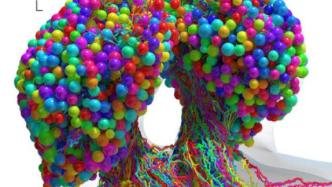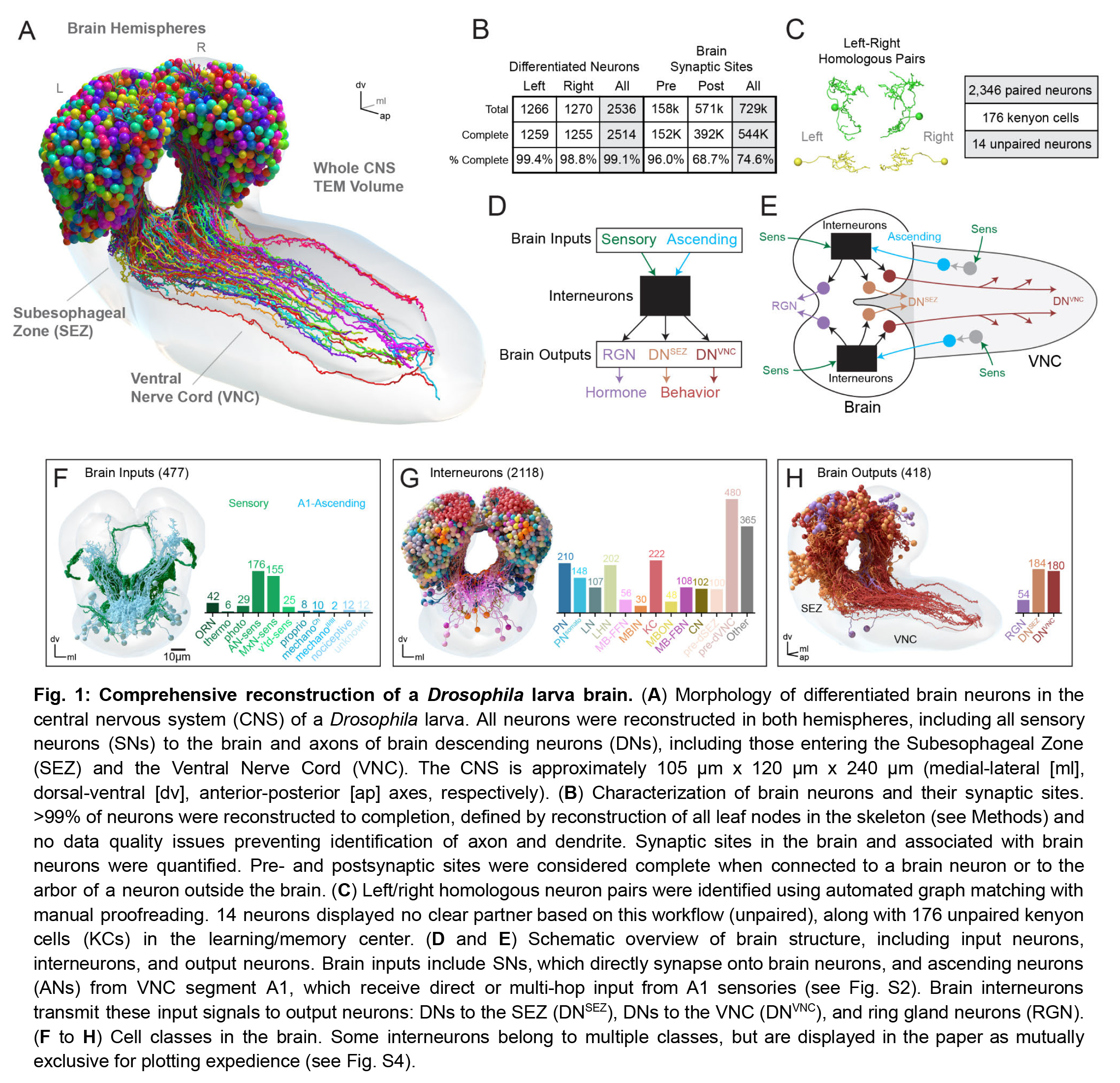
On March 10, the most complete Drosophila larva brain neuron connectome map so far - "Brain Map" was published online in the international academic journal Science. This research result will support future brain science research and inspire people to design a new generation of artificial intelligence systems.
On March 7, Albert Cardona, one of the corresponding authors of the paper and a professor at the University of Cambridge, told The Paper, "This lays the foundation for future research on how the brain changes in disease and evolution. "
An exciting discovery, says Albert Cardona, is that the brain's powerful computing power comes not only from the connections between one layer of neurons to the next, but also from connections across layers. This type of neural architecture minimizes the number of neurons required, reducing metabolic costs without compromising computational power.
Albert Cardona said, "Among these key findings, I would like to say that we discovered how strongly recursive the brain is. This is another characteristic of a powerful artificial neural network architecture." Most Recursive Sexual neural structures are associated with input and output neurons in the learning centers of the brain.
As more "brain maps" of larvae and other related species are mapped, people will better understand how and how the brain is "wiring" and change, revealing more principles of computation, the researchers said.
Joshua T. Vogelstein, another corresponding author of the paper and an assistant professor at Johns Hopkins University in the United States, told the media that how to write a program or code for a human brain network, "this is What we want to know." "What we know about the fruit fly 'code' will have implications for the human 'code'."

After 12 years of hard work, the researchers finally mapped the neuronal connectome of the fruit fly larval brain, which contains 3,016 neurons and 548,000 synapses.
What is a "brain map"?
The human brain is made up of different types of neuron cells whose axons criss-cross like vines in a forest, carrying signals to different brain regions. Moreover, the projection patterns of neurons are closely related to different brain functions.
Therefore, understanding how the brain works requires an in-depth study of the composition and connections of the brain's neural networks. Drawing a high-resolution brain neuron connection map, the so-called "brain map", has become an inevitable choice for brain science research.
It's been 50 years, Vogelstein said, and this is the first whole-brain "map" of fruit flies. "It's a milestone that proves we can do this."
The first brain "map" that humans tried to make was that of nematodes, which began in the 1970s and took as long as 14 years.
Since then, partial connection maps of the fruit fly, mouse, and even human brains have been drawn, but all represent only a small "map" of the brain.
The newly published study was a collaboration between researchers from Johns Hopkins University in the US and the University of Cambridge in the UK. The title of the paper is "The connectome of an insect brain."
Through serial sectioning, imaging and 3D reconstruction, the researchers finally drew a map of the connectome containing 3016 neurons and 548,000 synapses.
How to draw the "brain map" of Drosophila?
Albert Cardona told The Paper that they encountered many difficulties in their research. The research project started in 2010, and the preprocessing of 5,000 serial 40-nanometer-thick slices of the intact central nervous system of Drosophila melanogaster larvae was already a huge challenge. Because each slice is fragile, it can be easily lost or damaged. Imaging them at nanoscale resolution after preprocessing required three transmission electron microscopes to work simultaneously for six months, another major challenge. After successfully imaging, they still needed to align hundreds of thousands of individual images to reconstruct all of its neurons and synapses in 3D, to map all the "circuits" of its entire brain.
The research team deliberately chose fruit fly larvae because, for insects, this species shares many basic biological aspects with humans, including a similar genetic basis. It also has rich learning and decision-making behaviors, making it a useful model organism in neuroscience.
The research work at Cambridge University and Johns Hopkins University took 12 years. Imaging just one neuron can take a full day.
Researchers at the University of Cambridge created high-resolution images of neurons in the brain and studied them to find each individual neuron, rigorously tracing each neuron's synaptic connections.
From "Insect Brain" to "Human Brain"
"(But) this is just a starting point. Then, a major challenge is to analyze the 'circuitry' of the brain," says Albert Cardona.
The researchers hope that by analyzing the information processing mechanism in the Drosophila nervous system, they will inspire new machine learning architectures and inspire the exploration of the complex functions of the human brain. In the future, they will try to develop a computer program that can simulate the thinking of the human brain.
According to Albert Cardona, in the textbook, neurons integrate inputs on their dendrites and then transmit signals to other neurons via their axons. But in real life, in the brains of all animal species, whether vertebrates or invertebrates, axons also receive a large number of input synapses, while dendrites often present output synapses. This led us to classify all neuronal connections into 4 types: the classic axon-dendrite synapse, then axon-axon, dendrite-dendrite, and dendrite-axon. Typical synapses are the most numerous and dendritic-axonal synapses the least, and the characteristics of the 'circuits' they define are markedly different.
After the Johns Hopkins University research team received the data from the University of Cambridge, it took more than three years to use the original code they created to analyze the connectivity of neurons in the brain, find groups of neurons, and then analyze how the information spread in its brain.
The busiest circuits in this brain, the researchers found, are neurons in the input and output learning centers.
On November 28, 2022, the researchers uploaded the above-mentioned paper to the preprint website bioRxiv for publication, and it was published online by the journal Nature in more than three months.
The human brain has hundreds of billions of neuron cells, which are connected to form the most complex network in the world. All our cognition, emotion, decision-making, etc. depend on this network.
Pu Muming, the leader of China's "Brain Project" and an academician of the Chinese Academy of Sciences, mentioned in a speech that the goal of brain science research is very clear, which is to clarify the neural basis and working principle of brain function and understand how the brain works; I hope to get some inspiration from the research of the brain, to simulate the brain and get higher intelligent artificial devices, including intelligent robots.